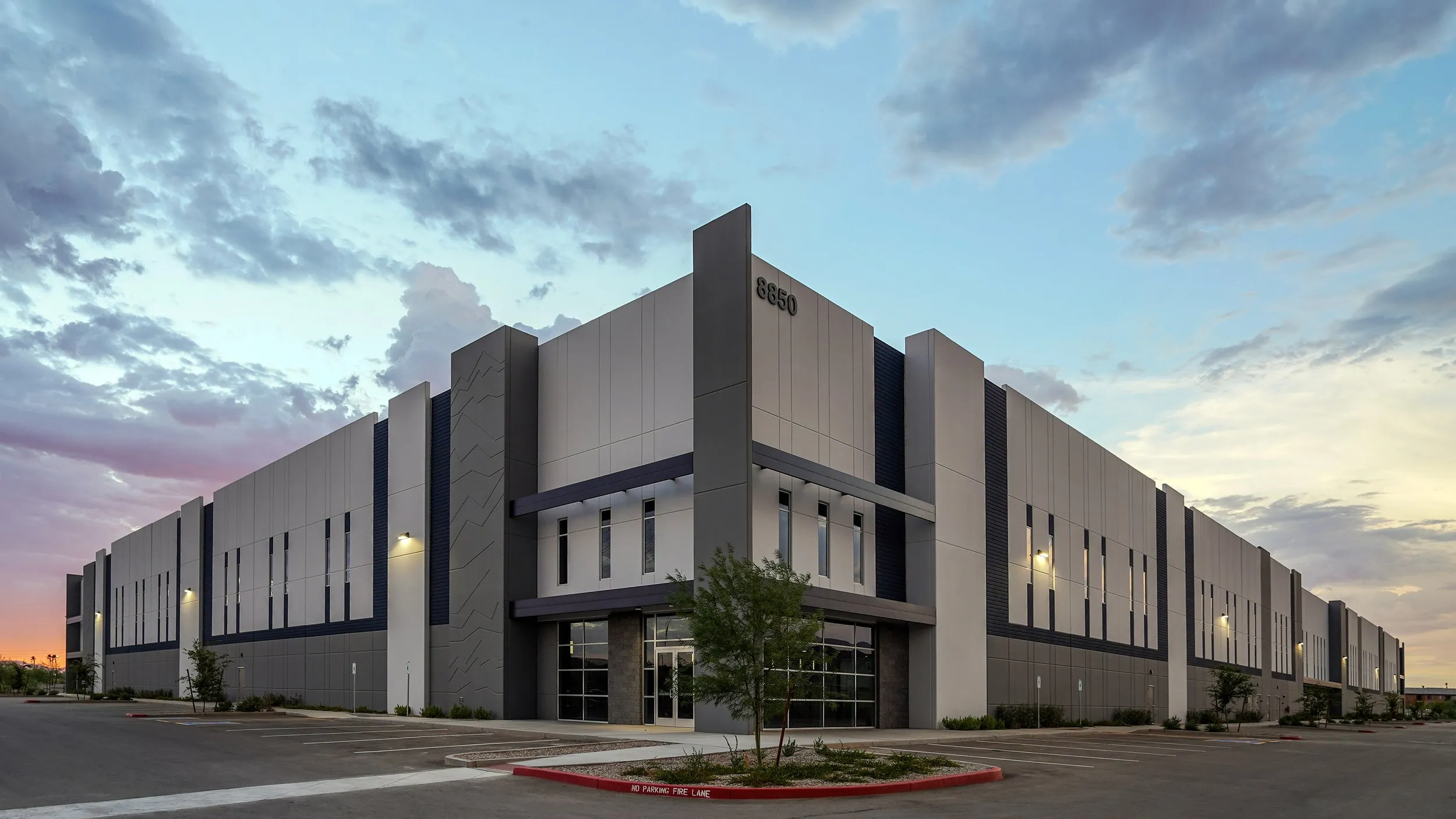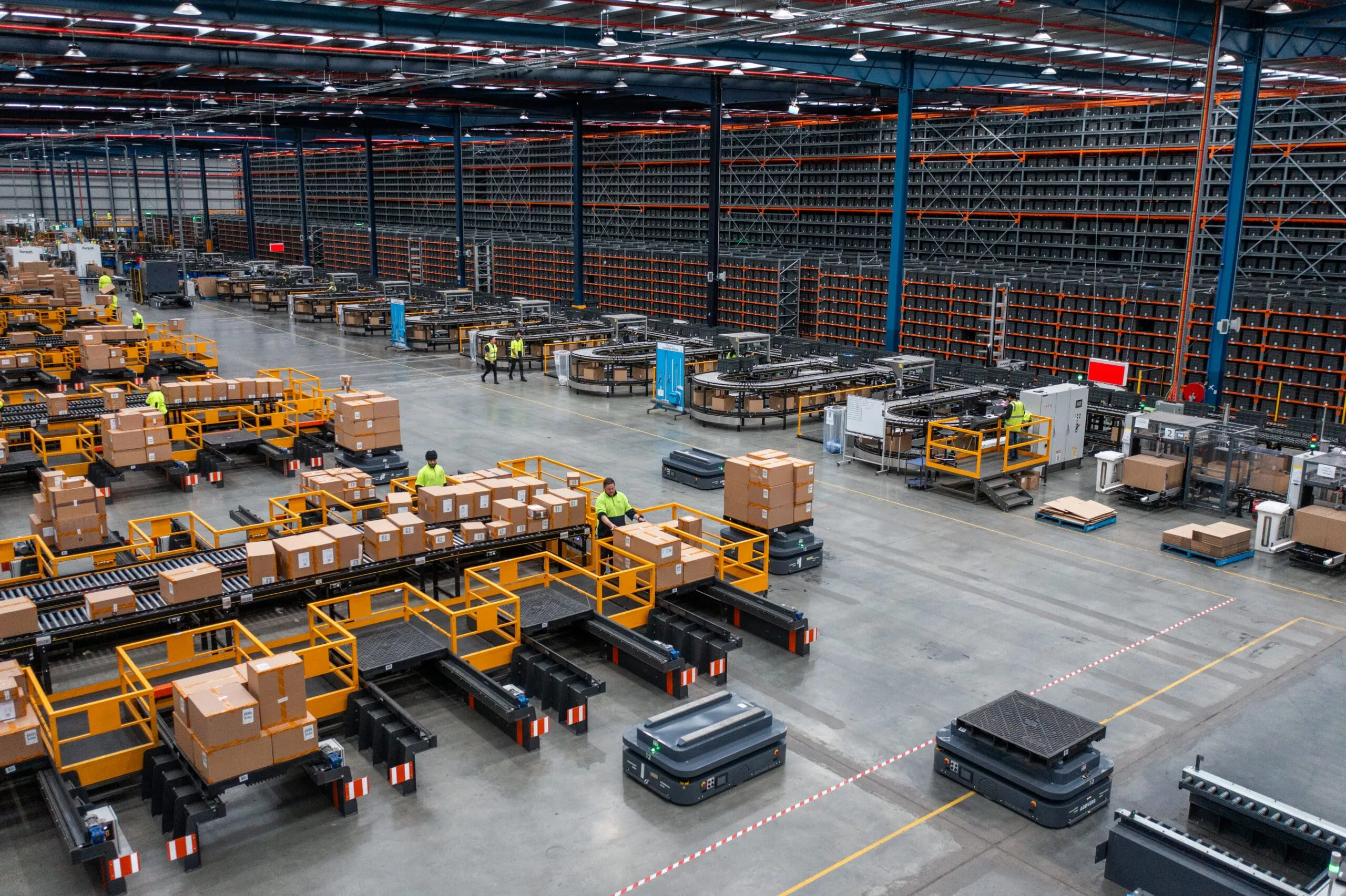
10 Industrial Building Design Ideas to Inspire Your Next Project
June 27, 2025
What comes to your mind when you think of industrial building designs? Undoubtedly, plain warehouses or cold, functional spaces. However, modern industrial design is completely breaking convention by blending functionality with aesthetics in a very stylish way.
A design can significantly affect productivity or brand identity, whether it's a manufacturing unit or a logistics centre. Modern industrial building designs are aesthetically pleasing, as well as built for more than just operations, due to their sleek exteriors & clever use of space.
We have compiled a list of 10 inspiring industrial building design ideas that go beyond the essentials. These ideas will make your next project stand out while still fulfilling its intended purpose.
Open-Plan Layouts

Industrial buildings often have open-plan layouts, which aim to maximise space utilisation by removing unnecessary partitions as well as cultivating flexible spaces that can adapt to changing needs.
All activities take place in an open space rather than in separate rooms designated for different departments or work zones.
This layout will help you work more effectively together as well as communicate more clearly, whether you're in a manufacturing unit or a creative industrial space.
Your industrial building design will appear more connected as well as future-proof with an open-plan design, which is ideal for businesses that rely on teamwork & flexibility.
Pros
- Improves cross-department collaboration
- Easier to reconfigure for future needs
- Allows more natural light to flow
Cons
- Can get noisy & distracting
- Lack of privacy without designated quiet zones
Best For
- Creative agencies
- R&D units
- Fast-growing startups where flexibility & communication are vital.
Use of Natural Lighting

Industrial building design often features skylights or transparent roofs to maximise the use of natural light. It's both functional and aesthetically pleasing.
Warehouses or assembly areas benefit significantly from its visibility & energy efficiency. Designing with natural light in mind offers several benefits, including a more pleasant work environment as well as lower long-term operating expenses.
It's an ideal scenario that improves lighting while also reducing environmental impact.
Pros
- Lowers energy costs
- Improves employee mood & productivity
- Enhances visual appeal
Cons
- Initial installation can be costly
- May require shading solutions in hot climates
Best For
- Warehouses
- Manufacturing units
- Creative studios
Sustainable Building Materials

Sustainable building materials are eco-friendly choices used in construction that significantly reduce environmental impact. Consider recycled steel or green concrete. These materials are either renewable or produced with minimal emissions.
Sustainability in construction without compromising performance or longevity is the goal of many forward-thinking businesses. Therefore, sustainable materials are the best choice for such projects.
Going green with your materials is a great place to start if you want an eco-conscious space that reflects your brand’s values.
Pros
- Environmentally friendly
- Long-lasting
- Can help achieve green certifications
Cons
- Upfront costs may be higher
- Availability may vary depending on location
Best For
- Brands committed to sustainability
- LEED-certified projects
- Eco-conscious manufacturing
Functional Mezzanine Levels

Think of functional mezzanine levels as smart additions that don't increase the building's footprint. They are intermediary floors built between the main floors of an industrial space. These raised platforms are ideal for storage or light manufacturing areas.
Mezzanines are ideal for warehouses or factories to maximise the use of available floor space. Setting up a functional mezzanine might be the space-saving solution if your industrial space is limited.
Pros
- Maximises vertical space
- Cost-effective expansion
- Great for separating work zones
Cons
- Structural integrity must be evaluated
- May require special permits & access installations
Best For
- Warehouses
- Logistics centres
- Manufacturing units needing storage or extra workspace without major expansion.
Industrial-Chic Interiors

Industrial-chic interiors are stylish yet functional, blending modern designs with raw elements. Think exposed brick or metal beams paired with sleek lighting & minimalistic furniture.
The unfinished style is being celebrated in industrial building design, yet it still manages to seem intentional & refined.
The industrial-chic style is ideal for spaces that come into contact with customers, such as showrooms or creative offices.
It enhances the building's appearance without compromising its original character, adding an extra charm. This design style is an excellent choice if you're seeking to create a space were elegance and functionality blend seamlessly.
Pros
- Low maintenance & durable
- Stylish yet rugged aesthetic
- Enhances brand perception in client-facing areas
Cons
- Might feel cold or unfinished to some
- Requires thoughtful design to balance rawness with comfort
Best For
- Showrooms
- Design studios
- Creative industrial spaces
Smart Building Automation

Controlling as well as optimising systems, such as lighting or machines, within an industrial area is the essence of smart building automation.
It's as if you're building suddenly has intelligence, with all systems controlled by sensors or even your phone. You can see the utilisation of your space in real-time, which helps you make better decisions.
Smart automation helps decrease human involvement while enhancing productivity across every area, making it ideal for extensive industrial facilities or manufacturing plants. Integrating smart technology is of utmost importance when you're building for the future.
Pros
- Enhances safety & productivity
- Real-time data for better decision-making
- Reduces energy & maintenance costs
Cons
- Higher initial setup costs
- Requires trained staff for management or maintenance
Best For
- Large-scale industrial parks
- Factories or any high-tech facility aiming for next-gen operations.
Vertical Storage Solutions

Maximise your building's height with vertical storage solutions, which utilise space by moving up rather than out. This clever design concept enables you to store more without requiring additional floor space in busy or high-volume industrial environments.
It's perfect for factories and warehouses because of how efficient it is as well as how much space it saves.
Vertical storage is a great improvement for businesses that are running out of capacity but have lots of ceiling height. It keeps things organised as well as being very productive.
Pros
- Saves floor space
- Enhances material organisation
- Reduces clutter & safety hazards
Cons
- May require forklifts or special access tools
- Load-bearing limits must be considered
Best For
- Distribution centres
- High-volume warehouses
- Facilities dealing with bulky inventories
Flexible Modular Spaces

Spaces in an industrial facility that are designed to be quickly reconfigured or extended by means of modular components such as moveable walls or pre-fab structures are known as flexible modular spaces.
Consider constructing customisable blocks. The best part about this structure is how flexible it is. It's easy to change the layout to accommodate additional departments or create temporary zones as needed.
Modular spaces allow you to expand without committing to a set plan, making them ideal for dynamic businesses or development centres. It is productive, as well as in sync with the needs of modern businesses.
Pros
- Cost-efficient to install
- Easily scalable or removable
- Customisable for various needs
Cons
- Less soundproofing than permanent walls
- May feel temporary or less robust
Best For
- Incubation zones
- Pop-up production units
- Companies in scale-up mode need adaptable spaces.
Biophilic Design Integration

Bringing aspects of nature into your industrial building design through biophilic design improves wellbeing as well as productivity. It’s about adding elements like indoor plants or even nature-inspired materials and textures.
The idea behind this is simple. We humans do best in settings that allow us to be in sync with nature.
It's perfect for workplaces in warehouses or spaces where people are free to express themselves.
Industrial settings can be transformed into environments that promote well-being as well as efficiency through the use of biophilic designs, which make spaces more alive as well as much more welcoming to visitors.
Pros
- Reduces stress & boosts mood
- Improves air quality
- Creates a more engaging, positive workspace
Cons
- Requires ongoing maintenance
- Can be challenging to implement in heavy-duty spaces
Best For
- Employee-centric workspaces
- R&D centres
- Areas aiming to blend nature with productivity.
Dedicated Collaboration & Breakout Zones

Although collaborative spaces foster teamwork, it is also essential to have private areas where employees can recharge or generate ideas.
Integrating dedicated zones for collaboration & relaxation adds a layer of intentional design that supports employee performance or morale.
These can be acoustic pods or glass-walled conference rooms, anything that complements the industrial style while also providing practical comfort.
Pros
- Improves employee focus & mental well-being
- Encourages innovation in a stress-free environment
- Helps balance noise & privacy in open spaces
Cons
- Requires extra planning or space allocation
- It can be underutilised if not well-integrated into the workflow
Best For
- Corporate industrial hubs
- Innovation labs
- Facilities with both physical & knowledge-based operations
The Final Thoughts
Modern industrial building design encompasses many aspects beyond simply constructing a structure with walls as well as a roof. The goal is to create a space that is not only functional but also futuristic.
The right design choices can enhance productivity while also promoting employee well-being. Here are some new ways to think about industrial spaces, whether you're starting from scratch or renovating an old one.
Always keep in mind that design & functionality are not separate entities; in fact, they work together in harmony to completely redefine the way your space functions or feels.
The next time you need an industrial space that looks good as well as works well, consider incorporating some of these ideas into the design.
Our services
Explore More Insights about Commercial Interior Designs

our clients

.webp)

.webp)



.webp)

.webp)

.webp)



.webp)
2M+
Sq. Ft. Of Office Space Designed
10+
Cities accessing our services worldwide
150+
Office Spaces Designed and Build
100%
Client Retention for Subsequent Office Spaces
















Thank you for your comment! It has been successfully submitted and will appear once it has been reviewed and approved.